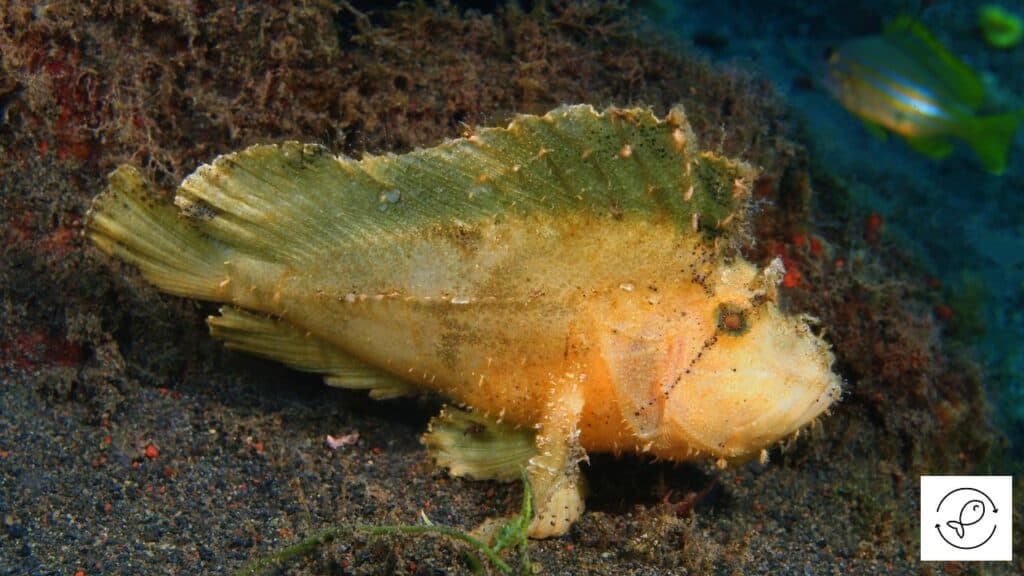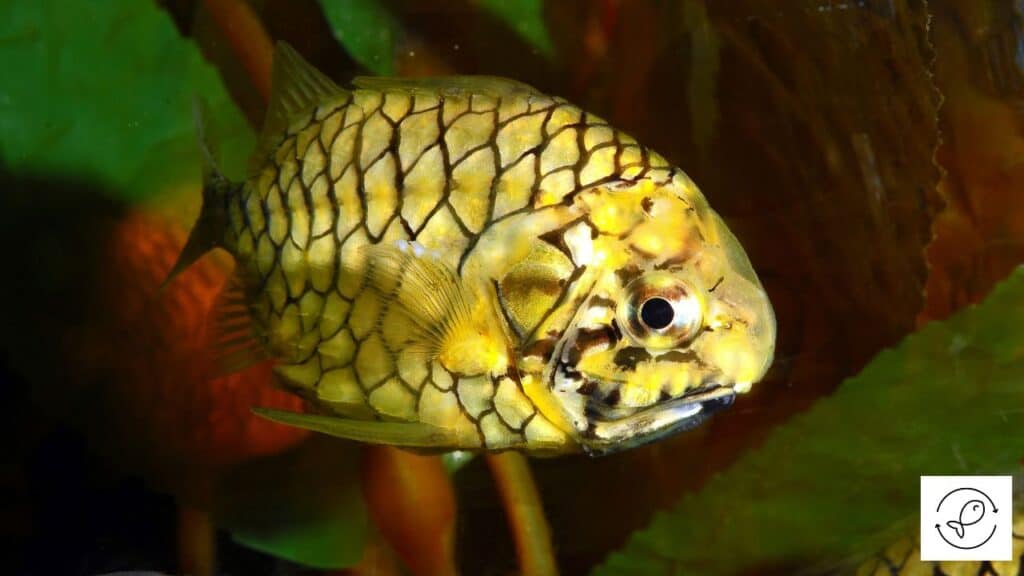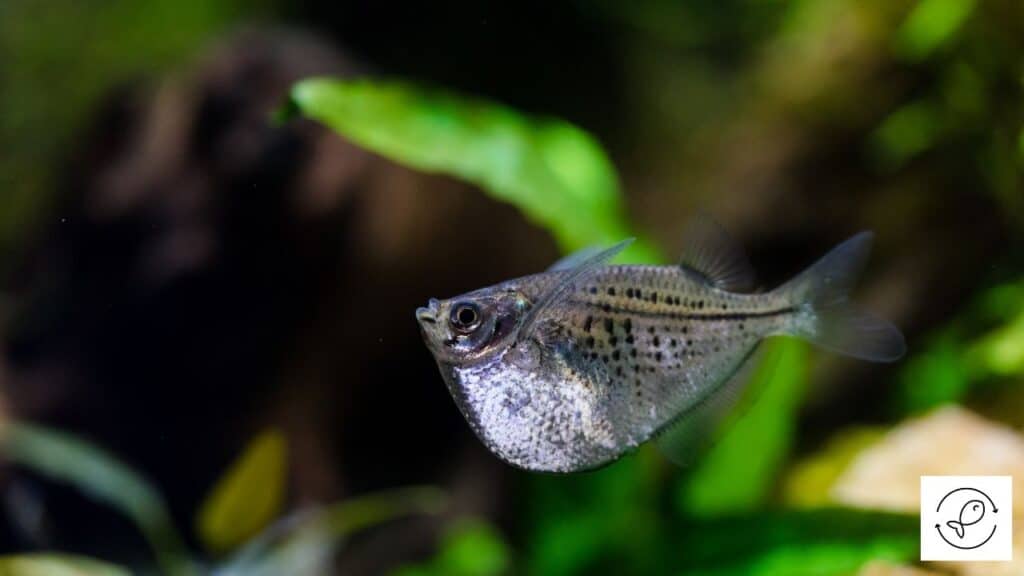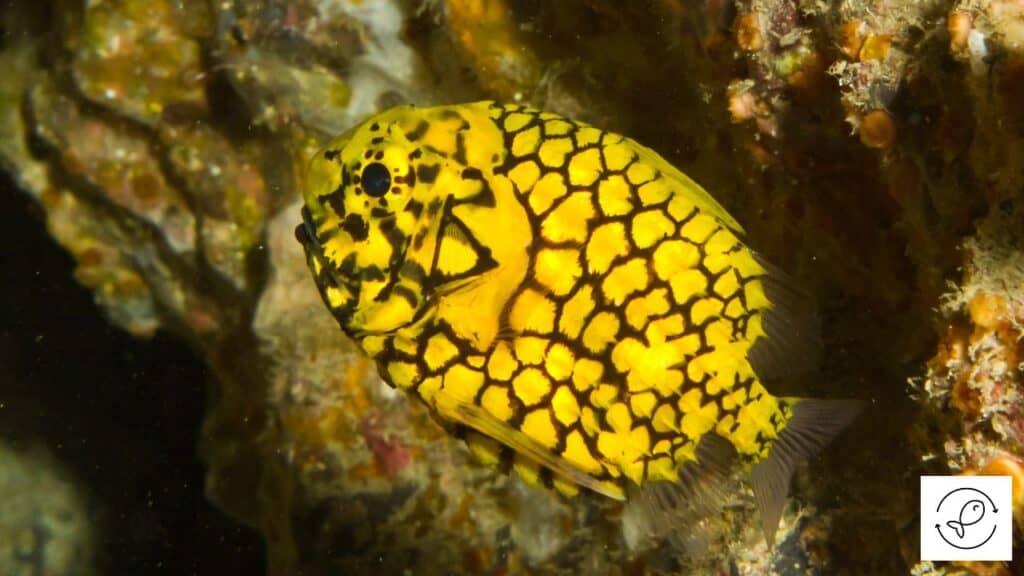The underwater kingdom is full of fish and creatures that can glow.
They have the unique ability to create their own light.
So let’s learn more about the numerous fish species that can glow in the deep oceans.
Fish That Can Glow In The Dark
Anglerfish

Anglerfish are bony fish that got their name because of their glowing lure.
They live most of their lives in the deep sea, more than 1000 meters below the surface, in total darkness.
There are over 250 species of these fish, and all of them inhabit the deep sea.
Their angling structure has been derived from the spines of a fish’s dorsal fin.
The end of this structure is occupied by large numbers of luminescent bacteria, which give the anglerfish its glow.
Since these fish live in darkness, their glow helps them in predation.
They’re ambush predators that wait in the dark until the prey comes nearby.
Also, the glow helps them find a suitable mate in the dark depths and hide from predators in the dim blue light of the water.
Bioluminescent Sharks
Check out how this fish looks like over here.
Research has discovered three deep-sea shark species, namely the kitefin shark, the southern lantern shark, and the blackbelly lantern shark, that possess bioluminescent properties.
These three sharks inhabit the twilight zone, ranging from 200 to 1000 meters in depth.
The kitefin shark, which glows blue, is the largest known vertebrate fish to emit bioluminescence.
Researchers believe the sharks’ glowing underbellies help them camouflage in the dark depths of the water to ward off potential predators and other threats.
Their glow also helps them to sneak up on prey and attract mates.
Midshipman Fish
Check out how this fish looks like over here.
Midshipman fish are toadfish that glow in the dark. They’re native to the eastern Pacific Ocean.
These fish are olive-brown with a narrow tail fin and wide dorsal fins.
They’re nocturnal fish that usually bury themselves at the bottom during the day and are active at night.
Midshipman fish are distinguished by photophores (light-emitting organs) on their body that is used to attract prey.
These fish rely on their food source to glow. They feed on tiny seed shrimp that contain a crucial ingredient for bioluminescence.
When midshipman fish eat these seed shrimp, a chemical reaction occurs inside them that makes them glow.
Apart from seed shrimp, they also feed on other small fish and crustaceans.
Dwarf Lantern Sharks
Check out how this fish looks like over here.
Dwarf lantern sharks are a species of dogfish shark belonging to the Etmopteridae family.
They’re primarily found in the Caribbean Sea, at depths of 1000 to 1500 feet near the coast of South America.
They’re the smallest species of sharks, reaching up to a maximum length of 8 inches.
Due to their tiny size, these fish aren’t targeted by anglers.
Dwarf lantern sharks have bioluminescent properties.
They possess photophores on their bellies that emit light and help to glow in the dark.
The bioluminescence helps them to avoid predation from large deep-sea animals.
The glow also helps to attract small fish and shrimp that they can feed on.
Snailfish
Check out how this fish looks like over here.
Snailfish are a family of fish that are primarily found in cold waters. These glowing snailfish are also known as Liparis Gibbus.
They live in the waters of Canada, Svalbard, Greenland, Russia, and southeastern Alaska.
About 400 species are known that mainly inhabit the north Atlantic and Arctic.
They’re tiny water fish that swim between 100 and 200 meters below the surface.
Snailfish are unique as scientists have discovered them glowing in the dark in the icy waters of the Arctic for the first time.
These fish lack scales, unlike other fish species.
Instead, they have a thick layer of mucus, and their pelvic fins fuse together into flat discs that stick to the substrate.
The glowing nature makes snailfish stand out from other fish even in cold waters.
Other fish that usually glow in warm waters were not found glowing in the Arctic.
Another reason snailfish are unique is because they glow in not just one but two different colors, which is quite unusual in a single species.
They glow in red and green colors.
Winter in the Arctic lasts from around October to early March. It’s entirely dark during these months with no sunlight.
Scientists wonder whether these fish have evolved to glow in the dark to survive the dark winters.
Lantern Fish
Check out how this fish looks like over here.
Lantern fish are small mesopelagic fish of the large family Myctophidae.
They reach a maximum of 30 cm in length compared to other deep ocean fish.
There are over 200 species of these fish, each possessing a unique lighting pattern.
Lantern fish have photophores located on their head, belly, and tail.
They use these light organs primarily to attract prey and hide from predators.
In addition, they also use light to communicate with conspecifics and signal other lanternfish during mating.
These fish are famous for their diel vertical migrations.
They spend their day mainly in the deep ocean and swim closer to the surface during the night in search of food.
Pineapplefish

Pineapplefish, also known as Mailfish, belong to the Monocentridae family.
They’re named for their pineapple-like appearance.
These fish have robust scales with black margins, forming a network pattern similar to a pineapple.
Pineapplefish have light organs on the lower jaw that produce a greenish glow.
The light is green when the fish is young and changes to red as it ages.
The light is produced from symbiotic bioluminescent bacteria, Vibrio Fischeri, present in the photophore.
Pineapplefish uses these light organs as a tool for catching prey.
They venture out at night using their light organs on sandy flats to feed on small shrimp.
These fish also use light to communicate with conspecifics.
Hatchetfish

Hatchetfish are deep-sea creatures that get their name from the distinct hatchet-like shape of their body.
These fish have thin bodies that resemble the blade of a hatchet.
They have light-producing organs known as photophores on their bellies that produce light.
Hatchetfish use this bioluminescence to hide from predators by producing their own light with the same intensity that matches the daylight filtering down from above.
The use of bioluminescence light is called counter-illumination.
Adjusting their bioluminescence makes these fish virtually invisible to predators looking up at them.
The unique thing is that hatchetfish can regulate the color and intensity of their light to match the light filtering down.
Also, each hatchetfish species has its own particular pattern of lights.
Dragonfish
Check out how this fish looks like over here.
Dragonfish are primarily found in deep oceans in the North and Western Atlantic oceans and the Gulf of Mexico.
These fish produce their own light through a chemical process known as bioluminescence.
The light is produced by an organ known as a photophore.
These fish look scary with large heads and sharp, fang-like teeth. They also have a barbel attached to their chin.
This barbel is tipped with a photophore that produces light.
They also have light-producing photophores along the sides of their body.
It’s believed that dragonfish use these light organs for mating purposes.
Besides, it also helps them catch prey as the prey gets attracted to the light.
Most fish that produce their light glow in blue-green colors, but dragonfish produces red light.

